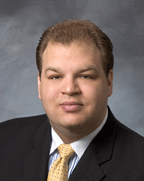News Articles
Monday, July 31, 2017
6th DCA: Subsequent Injury Fund Must Begin Payments when PD Starts
- State: California
- Topic: Top
- - Popular with: Legal
- - 8 shares
The 6th District Court of Appeal on Friday ruled that the state’s Subsequent Injuries Benefits Trust Fund's obligation to pay benefits to a permanently disabled worker begins when the employer’s obligation to pay permanent disability benefits begins.
 The fund was created in 1945 to encourage employers to hire workers with pre-existing disabilities by providing coverage for those workers if they suffer an on-the-job injury while working for the employer.
The fund was created in 1945 to encourage employers to hire workers with pre-existing disabilities by providing coverage for those workers if they suffer an on-the-job injury while working for the employer.
If a worker suffering from a permanent partial disability incurs another work-related injury that leaves the worker with a permanent disability rating of at least 70%, then the worker is entitled to compensation from both the employer and the SIBTF. However, the employer pays only the portion of the permanent disability compensation determined to be directly attributable to the last on-the-job injury and the SIBTF pays the rest.
Historically, the SIBTF commenced payment of benefits when the injured worker reached maximum medical improvement – but the 6th DCA said that made the fund four years late in compensating Jim Guerrero.
Guerrero was injured while working as a construction laborer. He collected temporary disability benefits on an intermittent basis between 2005 and 2006. He negotiated a lump sum settlement for a permanent disability claim in December 2014.
Meanwhile, Guerrero applied for benefits from the SIBTF, asserting that a prior medical condition had combined with the work injury to leave him more than 70% disabled.
The SIBTF contested his claim, but Administrative Law Judge David L. Lauerman found Guerrero was permanently and totally disabled by the combined effects of his work disability and his pre-existing disability.
Lauerman determined that the SIBTF was liable for the payment of benefits as of June 16, 2006 – the day after Guerrero last received a payment of temporary disability benefits. The SIBTF protested, but the Workers’ Compensation Appeals Board upheld the judge’s ruling.
The fund sought judicial review, but a unanimous 6th DCA panel affirmed the WCAB’s decision in a published decision Friday morning.
The court noted that Labor Code Section 4650(b), which governs the payment of workers’ compensation benefits for permanent disability, obligates an employer to begin making permanent disability payments to an employee within 14 days of the last temporary disability payment, even if the worker is not permanent and stationary.
But the SIBTF is not considered an employer for the purposes of workers’ compensation benefit payment, and its obligations are governed by Section 4751.
Section 4751 provides that a worker shall receive benefits from the SIBTF “in addition to the compensation due under this code for the permanent partial disability caused by the last injury compensation for the remainder of the combined permanent disability existing after the last injury.”
The 6th DCA reasoned that the “common sense meaning” of the statute’s requirement that the worker receive SIBTF benefits “in addition to” permanent disability benefits means the subsequent injury fund is required to commence payments at the same time as the employer’s obligation to make permanent disability payments is triggered.
“To hold otherwise would contravene the requirement of Section 4751 that whenever an employee qualifies for SIBTF payments, they shall be paid ‘in addition to’ the permanent disability payments made by the employer,” the court said.
The court acknowledged that the language of Section 4751 was amenable to differing constructions, since the statute does not expressly state when the SIBTF benefits commence. On the other hand, the court said, there was no authority to support the fund's position that its liability to begin making payments did not commence until January 2011, when Guerrero reached permanent and stationary status.
“Although an established practice may inform our interpretation, it does not in itself provide a compelling reason to continue the practice, particularly when there has been an intervening change in law,” the court said.
That change was the passage of SB 899 in 2004.
SB 899 imposed a 104-week limit on temporary disability benefits for must injuries. Prior to SB 899, injured workers could collect TD until they either returned to work or were declared permanent and stationary.
To avoid having a gap in payments to an injured worker whose medical condition is not deemed permanent during the 104-week temporary disability period, the Legislature amended Section 4650 to provide that permanent disability payments must commence when temporary disability payments stop, even if the injury has not yet been deemed permanent and stationary.
“The overall effect of these amendments was to change the timing for permanent disability payments to begin, from when the injury has been declared permanent and stationary (under the former version of the statutes) to when temporary disability payments cease (under the current version),” the court said.
This change also necessarily affected the timing for the start of SIBTF benefits, the court said.
While the Legislature did not amend Section 4751, the court said this decision meant the commencement of SIBTF benefits remained tethered to the timing of the commencement of the worker’s receipt of permanent disability benefits. Since SB 899 changed the latter, the former was changed as well.

Narine Avanes
Narine Avanes, a defense attorney with Manning & Kass, said she read the court’s decision as establishing a rule that “SIBTF benefits commence at the time the employer’s obligation to pay permanent disability begins which, per Labor Code 4650(b), is within 14 days of the date temporary disability benefits were last owed,” because “holding otherwise would deny injured workers SIBTF benefits during the gap between the end of the 104 weeks of temporary disability benefits and the date the injury is deemed permanent and stationary.”

Jake Jacobsmeyer
Fellow defense attorney Jake Jacobsmeyer of Shaw, Jacobsmeyer, Crain & Claffey said that could potentially be a big deal for an injured worker. Under the facts of this case, he noted, there were four years’ worth of benefits in dispute.
Jacobsmeyer said the amount of those payments were most likely somewhere between $500 to $1,000 per week, so the fund was looking at “very significant” savings if it didn’t have to pay Guerrero until his condition became stable.
But defense attorney Michael D. Peabody of Bradford & Barthel on Friday said he thought the court reached “the right decision” in saying SIBTF benefits were required for the period of time between the end of Guerrero’s last payment of temporary disability and date it was determined that Guerrero was permanently disabled and eligible for SIBTF benefits.
Since a “carrier would be responsible for the retroactive benefits payable during that gap,” Peabody said, “it makes sense that SIBTF would also be responsible to make a retroactive payment for that period of time.”

Michael Peabody
Given the high level of disability required to be eligible for SIBTF benefits, Peabody said he suspected the court’s ruling may “be expensive for the fund,” but he said, “it's the right thing to do” for workers who have been so seriously incapacitated.

Jason Marcus
California Applicants' Attorneys Association President-Elect Jason Marcus said the 6th DCA’s ruling was “certainly a good decision for those seriously and catastrophically injured workers who rely on SIBTF benefits.”
The opinion “provides clarity and removes any uncertainty about potential delays of SIBTF benefits between the time that temporary disability benefits end, per the arbitrary two-year cap, and the start of SIBTF benefits."
Almost every state has had some form of a subsequent injury fund at one point. The funds grew in popularity following World War II as states looked for ways to ensure veterans injured in the war could find employment. Second injury funds were created to eliminate employers' concerns over being held liable for the cumulative effect of a war injury plus an industrial injury.
But in recent years there has been movement to eliminate the funds.
Alabama, Florida, Minnesota, Rhode Island, Colorado, Kansas, Nebraska, South Dakota, Connecticut, Kentucky, New Mexico, Utah, the District of Columbia, Maine, Oklahoma, Vermont and Georgia have done away with their version of the SIBTF.
To read the court’s decision, click here.
Today’s News
- Calif. - Deputy's Refusal of Surgery Results in Denial of Duty Disability Retirement Top 12/31/25
- N.Y. - Court Revives Worker's Labor Law Claims Against Owner of Single-Family Dwelling NORTH 12/31/25
- Iowa - Court Lacks Jurisdiction to Hear Worker's Challenge to Denial of Petition for Alternate Care NORTH 12/31/25
- W.Va. - Neither Court nor Board of Review Can Grant Worker's Request to Accept Late Protest SOUTH 12/31/25
Advertisements
Now Trending
- Workers' Compensation News
-
Calif. Deputy's
Refusal of Surgery Results in
Denial of Duty Disability…
Posted on Dec 31, 2025Scott Rubel says: “This is a horrible decision. How can a refusal to allow a…”
-
Tenn. High Court
Defines Aggravation of Preexisting
Condition Under 2013…
Posted on Dec 24, 2025
-
Calif. DWC Updates
Medical Equipment Section of Fee…
Posted on Dec 29, 2025
-
Texas Court:
Refinery Owner Entitled to Mandamus
Relief Dismissing Worker's Claims…
Posted on Dec 29, 2025
-
Tenn. High Court
Creates Employment Test for Vendor…
Posted on Dec 26, 2025
-
Ohio Injured
Worker Establishes Entitlement to
Expand Scope of Claim…
Posted on Dec 30, 2025
-
Texas Audit
Identifies Opportunities to Improve
Prescribing…
Posted on Dec 24, 2025
-
Wyo. Policy Group
Calls for Ending State…
Posted on Dec 29, 2025
-
La. Supreme Court
Finds Employer's Payment of
Benefits Tacitly Renounced…
Posted on Dec 29, 2025
-
Wash. Bills Would
Lower Settlement Age, Require More
Information for Rate…
Posted on Dec 26, 2025
Jobs
- Defense Attorneys - Remote Work Available
- Trial Attorney - Workers Compensation Staff Counsel
- Defense WC Attorney Wanted- We will beat any offer for the right candidate. Low billables, real bonuses and fast track equity partnership
- Workers' Compensation Examiner
- JC-501284 Workers’ Compensation Judge
- Legal Secretary
- Attorney for Northern California Workers' Compensation Jobs
Upcoming Events
Jan 15, 2026
Webinar: Psychosocial Factors
Discover how psychosocial factors impact recovery outcomes in injured workers during WCRI’s 30-min …
Jan 22, 2026
Outlook 2026: What’s Ahead for
WorkCompCentral is hosting a 120-minute, CA MCLE–accredited live webinar on January 22, 2026 (time …
Mar 3-4, 2026
Save The Date! WCRI’s 2026 Ann
Registration will open up in the coming months. We'll see you there! - Leading national workers' …
Social Media Links
c/o Business Insurance Holdings, Inc.
Greenwich, CT 06836





One Comment
Log in to post a comment
Tish Sommer Jul 31, 2017 a 7:07 am PDT
I am not aware of OK doing away with their version of the SIBTF. Can you give me the basis of this statement.
Sherri Okamoto Jul 31, 2017 a 9:07 pm PDT
Oklahoma is listed in these research memos from Nevada and South Carolina - https://www.leg.state.nv.us/Division/Research/Publications/Bkground/BP01-01.pdf http://www.scstatehouse.gov/Archives/CitizensInterestPage/WorkersComp/Salanearticle2.pdf